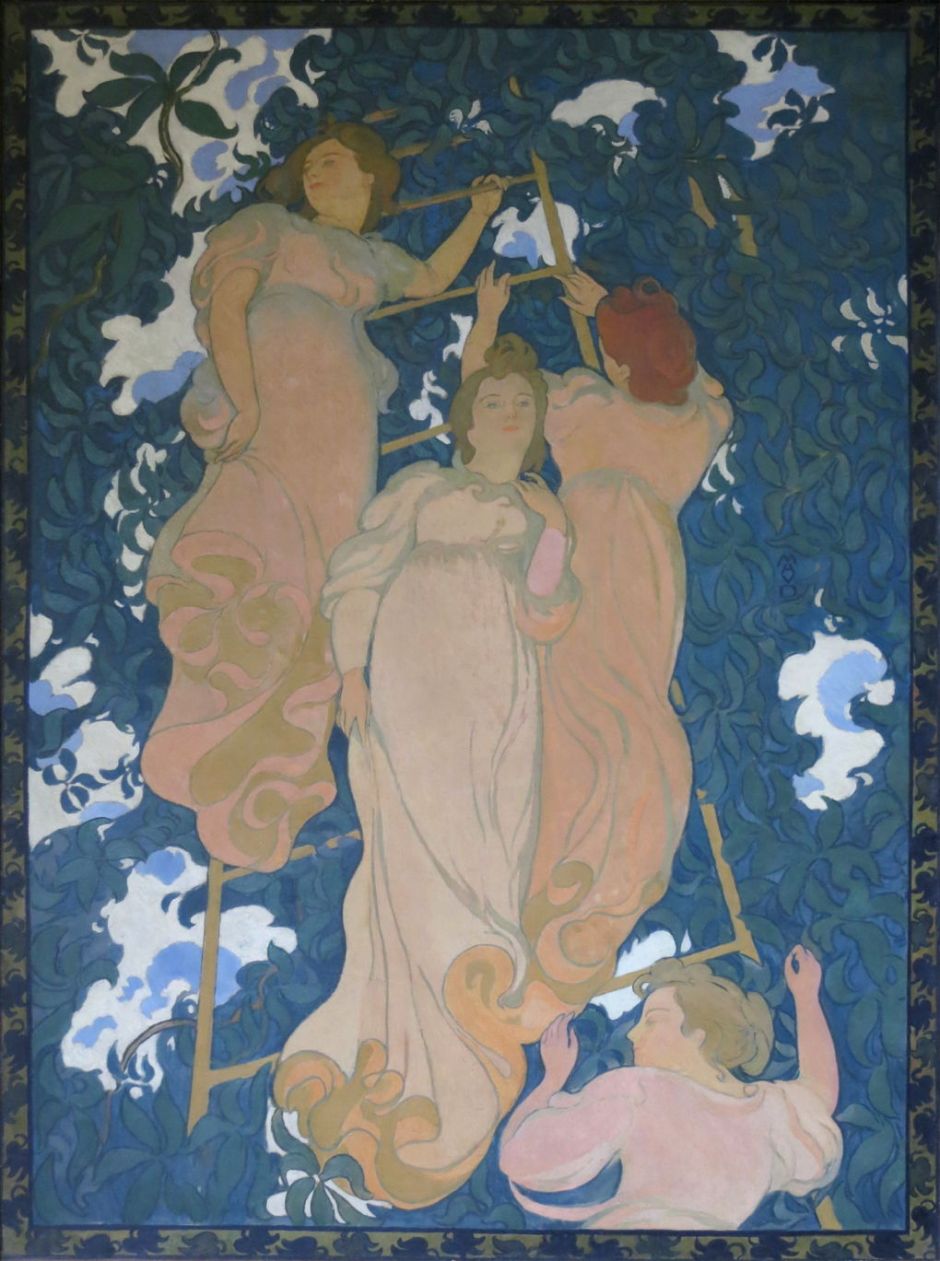Between 1886 and 1889, Paul Gauguin had assembled a school of artists around him in Pont-Aven then Le Pouldu in Brittany, where they developed a distinctive style together. Under his direction, Paul Sérusier had painted The Talisman in the summer of 1888, which formed the touchstone and religious icon for the new group as it formed.
But Gauguin was working on a different project, which in early 1891 took him to Tahiti. By this time, the Nabis, as they had named themselves, had exhibited together in 1889, and the following year Maurice Denis published their manifesto as an Impressionist and Synthesist movement which he termed enigmatically neo-traditionalism. This article looks at their paintings between that manifesto and 1893: the infancy of the Nabis.

Sérusier’s Portrait of Paul Ranson in Nabi Costume adopts almost mediaeval style, and casts his subject in the role of a bishop clutching an ornate crosier and reading from an illuminated book – a humorous indication of the religious feelings the Nabis had for their art and aesthetics.

Sérusier’s painting of Breton Wrestling remains in the school of Gauguin.

Pierre Bonnard was at the height of his Japonism(e), painting vertical panels such as The Dressing Gown, in which decorative patterns rather than colour or outline are used to distinguish figure from ground.
In 1891, Pierre Bonnard, Édouard Vuillard and Maurice Denis started sharing a studio, which formed a focal point for the members of the new group, including Ker-Xavier Roussel and Paul Sérusier. But it was Paul Ranson’s studio which was the ‘temple’ at which The Talisman was on display like an icon.

Vuillard’s Child Wearing a Red Scarf also shows flattened perspective and emphasis on patterning, particularly in clothing, although his colours weren’t as muted as those of some of the others.

In Maurice Denis’ overtly Japoniste September Evening, the forms of the figures are flattened, each wears a patterned dress, and colours are muted.

Paul Ranson’s paintings started to feature the figure of a nude bent forward to grasp her feet, as in his Lustal, which became a recurrent motif in his Nabi works.

Working in oil with pen and black ink, in his Afternoon in the Garden Pierre Bonnard combined colour and patterning in an image which has lost all depth, but retains clear pictorial structure.

Jan Verkade’s two Decorative Landscapes, above and below, have muted colours and flattening of depth, but are still firmly rooted in Gauguin’s Pont-Aven style.


This image of Ker-Xavier Roussel’s Conversation is unusual for revealing its rich surface texture. Under that, it too has muted colours, flattened perspective, and patterned textiles.
In 1892, several of the central Nabis – Ranson, Sérusier, Bonnard and Vuillard – worked together on theatrical sets for a production of Rimbaud’s Bateau Ivre in Paris.

Maurice Denis interpreted a popular contemporary motif of women picking fruit in high Nabi style in The Ladder in the Foliage (1892). Gone are the patterned dresses, replaced by flowing curves more typical of art nouveau illustrations. There are no fruit either, and the poses of these women suggest a more spiritual purpose in their ascent.

The Croquet Game, also from 1892, continues to show Pierre Bonnard’s fascination for Japonism(e) and occasionally gratuitous use of patterning.

The Stages of Life is one of two versions of this motif painted by Ker-Xavier Roussel in the early 1890s, both of which have several Nabi characteristics.

By 1892-93, Félix Vallotton’s flattened and stylised figures in his Bathing on a Summer Evening looked as if they had been applied like collage to a background reminiscent of some of Ferdinand Hodler’s alpine meadows.
In the mid-1890s, the Nabis were at their height, and exhibited in Toulouse in June 1894, and again the following year at Siegfried Bing’s gallery on the Rue de Provence in Paris, which specialised in modern and Japoniste art, as I will examine next week.

